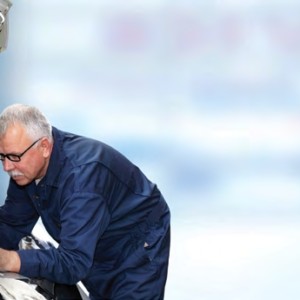The Other Half of the Sky
For the first time in this magazine’s history we’ve decided to turn the spotlight on women.
That’s not to say this is the first time, we’ve covered women and driving issues between our covers, but this is the first time we’ve devoted this degree of space and coverage to the issue.
Why now?
It’s a well-known fact that there continues to be an ongoing driver shortage in our great industry but women represent only about three-to-three-and-a-half percent of Canada’s 300,000 drivers. That’s barely a blip on anyone’s radar when you realize that women make up 47% of the Canadian workforce.
According to freightwaves.com, women actually make up about 47% of the trucking business but the majority of those positions are women in management, administrative or support positions like dispatchers.
And while recruiting and mentoring initiatives are having some success in luring females to the profession, growth is slow. Covid hasn’t helped but there’s other perceived barriers as well.
Chief among these is probably safety. Women in over-the-road driving roles are still concerned about personal safety in places like strange parking lots or truck stops, especially when overnight stops are concerned. Many women thus opt for local driving roles that keep them closer to home.
And “home” is another concern. Like their male counterparts, women have work-life balance issues to be concerned about. The road can be a lonely place that takes workers away from home and family for days or weeks at a time. It’s no secret that many drivers put in longer hours to top up their earnings but at what cost?
The very design of trucks themselves can also be challenges for women who tend to be short in stature. Trucks are traditionally designed for wide-framed men, and while trucks often include various steering wheel modifications and seat adjustments, women may still find it uncomfortable maintain a comfortable and effective driving position.
But it’s also important to note the perks as well. Women, even those new to the profession are enticed by salaries that are comparable to those of their male counterparts. There’s often good benefits packages not to mention the perceived “freedom of the road” that’s also a powerful lure.
But the industry is also becoming more organized and events like Trucking HR Canada’s Women with Drive or the Trucking Human Resources Sector Council Atlantic’s mentoring programs are helping women find their place in an industry poised for change.
We encourage you to take a few moments and let women like Tanisha Kishan introduce themselves. Kishan has a few interesting things to say about electric vehicles and their place in the Canadian landscape. Likewise, people like Andrea Ghaney from Fix Auto St. John’s Avalon (Newfoundland) and Katherine Gordillo of Fix Auto Charlottetown (Prince Edward Island) are making inroads in the industry. Both are recognized as part of the “Women of Fix Network” series. The series is part of Fix Network’s efforts to promote women’s representation in the aftermarket industry.
These are just some of the women you’ll meet this issue and the initiatives that you’ll read about that are currently happening in the automotive and trucking industries. Kristen Lipscombe’s feature this issue will indeed raise a few eyebrows while shedding light on women’s status in an ever-shifting sector.
Indeed, the time has come to recognize that women have a vital role to play within the multi-levelled transport industry and much to say about changes that need to occur, including raising the presence of women of colour.
So, get a cuppa jo, get comfy and enjoy the people you’re about to meet.


